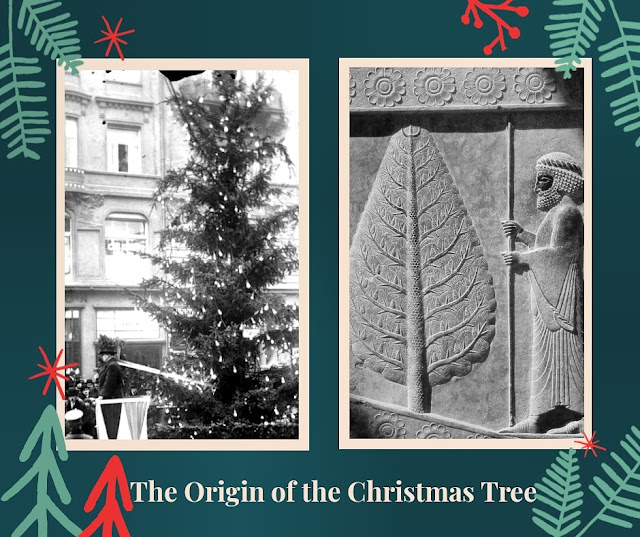The Origin of the Christmas Tree
For Iranians, the cypress (Persian, sarv) is rich with symbolism. It is a symbol of life - a tree of life. As an evergreen that can seemingly live forever, it is the symbol of agelessness and longevity - of the triumph of life over forces that have shortened the lifespan of other forms of life.
And that is why on the last day of autumn there is a Persian ancient celebration which calls " Yalda" (the longest night of the year) which they used the Cyprus tree as a symbol of life, Christians later used it as a Christmas symbol.
The photo in right is the Cypress tree on a frieze at Persepolis, Shiraz, Iran (ca. 550–330 BC).
Left: An early example of a public Christmas celebration tree for the unemployed in Prague, 1931.
Iranians believed that evil forces were dominant on the longest night of the year and that the next day belonged to Mithra, goddess of light and her birth which is early Christians linked her birth to the birth anniversary of Prophet Jesus too.
Cyprus stands resolute as a symbol of freedom and liberty and justice. Its stands upright as a symbol of truthfulness, fairness and justice. The Persians regarded the cypress tree as sacred, and it is believed that it was these same people who originally brought the cypress tree with them to other areas of the world.
Cyprus tree in Persian Miniature
Persian cultures believe the tree is a symbol of freedom and integrity. It was thought that the essence of the tree carried with it truthfulness, so anyone who breathed in the scent of the tree could not be deceitful in its presence.
Cyprus motif on Persian Carpet
Painters and visual artists have also focused on to the cypress tree and adopted it as one of their favorite theme. Whenever a painter has tried to depict paradise or an idyllic realm, he has populated it with tall cypress trees, and architects, stucco-makers and tile-makers have amply utilized its form in their creations, and women have woven colorful cypress trees in their textiles or carpets. Adding the rows of cypress trees adorning the walls of Persepolis, depicted under the guard of Persian soldiers, to the cypress trees remaining from the Islamic period, one better realizes the eternality of the cypress tree in Iranian culture, and becomes even more eager to discover the secret of this eternality. In this quest, one comes across more historic events related to the cypress tree.





Comments
Post a Comment